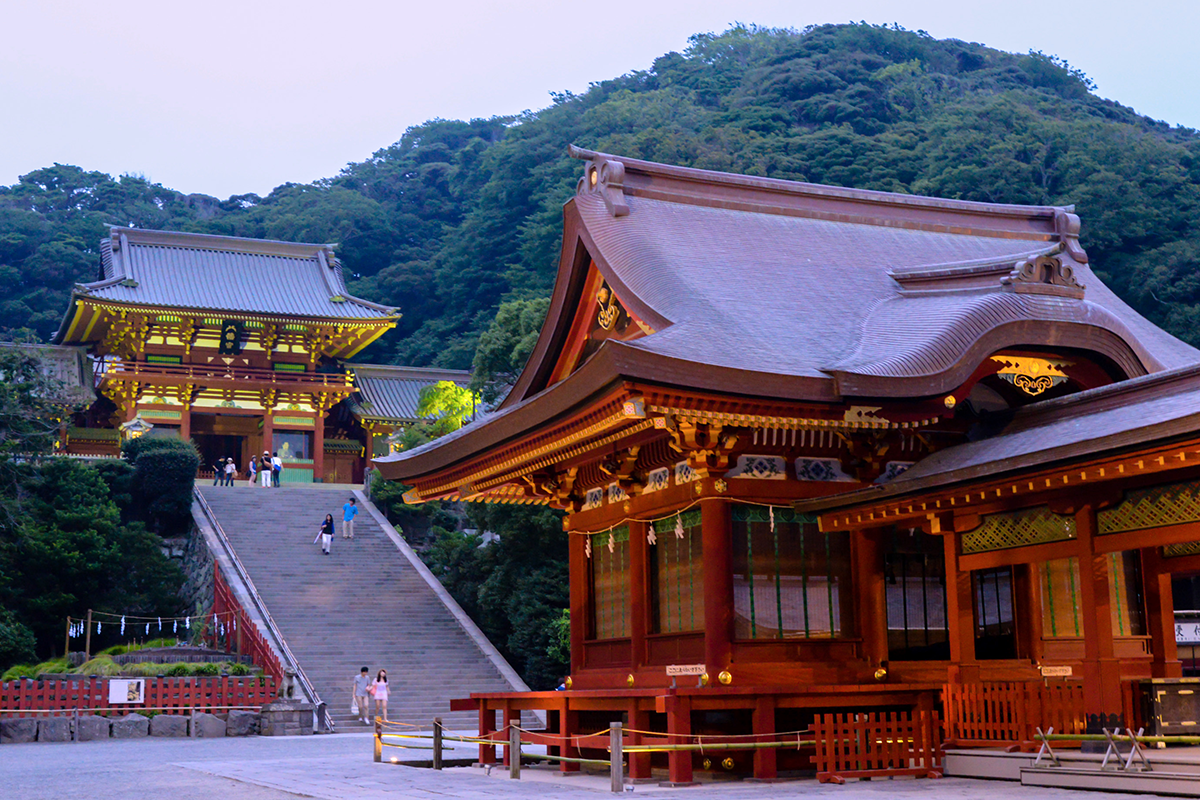Tsurugaoka Hachiman-gū
鶴岡八幡宮
Step back in time and explore Japan's rich cultural heritage at Tsurugaoka Hachiman-gū (鶴岡八幡宮) in Kamakura - a must-visit shrine for history buffs and travelers alike!

Call this number
Google Map in English
Google Maps in Japanese
Nestled in the heart of Kamakura, Japan, Tsurugaoka Hachiman-gū is more than just a historic Shinto shrine; it’s a portal to the past, a testament to the legacy of samurai, and a captivating fusion of Shinto and Buddhist traditions. Our journey to this sacred site transcended the ordinary, immersing us in the rich tapestry of Japanese history and spirituality.
In 1063, Minamoto Yoriyoshi, head of the Minamoto clan, erected a humble shrine named Tsurugaoka-gu, later known as Yui Wakamiya, to express gratitude to the divine forces for their triumphs on the battlefield. However, it was his descendant, Minamoto Yoritomo, who forever transformed this shrine in 1180. Yoritomo, the inaugural shogun of the Kamakura period, moved the shrine to its current location and dedicated it to the god of war, Hachiman. This pivotal moment marked the beginning of an era that would shape Japan for centuries, establishing Kamakura as the nation’s de facto capital, shifting power from Kyoto to the east, and instituting the shogunate, a military rule that endured until 1868.
Our exploration of Tsurugaoka Hachiman-gū opened a window to the Kamakura period, a time of samurai valor and political prominence. The shrine’s origin story, rooted in the desire for divine protection in battle, encapsulates the ethos of this epoch. As we stepped onto the sacred grounds, it was impossible not to feel the weight of history.
The shrine has evolved through the ages, adapting and expanding while preserving its spiritual significance. Today, it sprawls across 2.5 hectares, boasting exquisite gardens, serene ponds, and charming bridges that envelop visitors in tranquility. Ascending the grand stairway to the main hall, a structure dating back to 1828 and one of Japan’s largest wooden edifices, we passed beneath two iconic torii gates. The first of these gates, a gift from the legendary feudal lord Toyotomi Hideyoshi in the 16th century, serves as a testament to the shrine’s enduring allure.
During our visit, we were fortunate enough to witness a traditional Shinto ceremony. As the priests performed purification rituals and offered prayers and blessings to the kami, we felt a profound connection to Japan’s spiritual heritage. The shrine’s museum, housing an assortment of artifacts and treasures that chronicle Kamakura’s history and culture, further enriched our understanding of the region.
Historically, Tsurugaoka Hachiman-gū held a place of paramount importance, revered as one of eastern Japan’s three most significant shrines. It drew countless samurai, who came seeking divine favor for victory in battle. The shrine’s main hall, or honden, itself a national treasure, stands as a testament to its historical significance.
Today, Tsurugaoka Hachiman-gū beckons tourists and locals alike, offering a glimpse into the past and an opportunity to explore the shrine’s enchanting surroundings. The shrine’s small museum, housing precious relics and historical documents, provides a treasure trove of knowledge for those curious about its storied past.
One of the shrine’s most celebrated events is the Tsuruoka Hachiman-gū Reitaisai, a September festival characterized by a lively parade of portable shrines, traditional music and dance performances, and exuberant festivities that evoke the spirit of the Kamakura period.
Another enchanting feature of the shrine is the Sando, the approach to the main hall. Lined with approximately 2,000 cherry trees, this path is a breathtaking sight during cherry blossom season, attracting visitors from far and wide. The ethereal beauty of cherry blossoms in full bloom creates a picturesque tableau, reminding us of the temporal nature of life and the enduring cultural significance of Tsurugaoka Hachiman-gū.
In the heart of Kamakura, Tsurugaoka Hachiman-gū transcends time, beckoning travelers to immerse themselves in the captivating blend of history, spirituality, and natural beauty that defines Japanese culture. As we departed this sacred sanctuary, we carried with us a profound appreciation for the enduring legacy of the samurai and the living traditions that thrive within this hallowed shrine.
Contact us at [email protected], or click here to use our contact form.
Submission successful. You will receive a confirmation email, shortly.